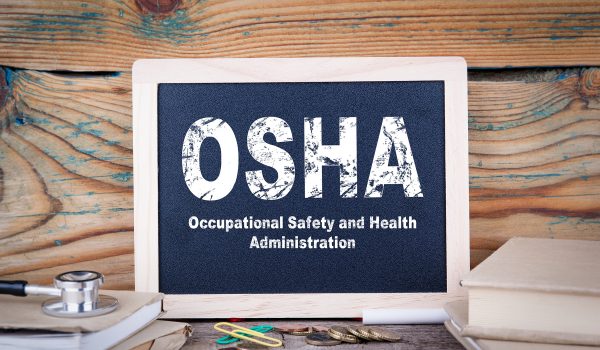In response to President Joe Biden’s January 21, 2021 Executive Order on worker health and safety, the Occupational Safety and Health Administration (OSHA) launched a National Emphasis Program (NEP) on March 12, 2021, with the stated goal of “significantly reducing or eliminating worker exposures to” COVID-19. This NEP is set to remain in effect for up to one year from its launch date.
The NEP will primarily focus on businesses that OSHA believes put the largest number of workers at serious risk of contracting COVID-19. While the targeted establishments unsurprisingly include those in the healthcare industry (e.g., hospitals, medical offices, assisted living facilities, and nursing homes), also included are establishments at which OSHA believes non-healthcare essential workers “are likely to have the highest frequency of close contact exposures to the public or to coworkers resulting from their on-site work-related duties.”
Many establishments in the manufacturing industry — such as food and beverage manufacturing, chemical manufacturing, primary metal manufacturing, and transportation equipment manufacturing — are included. Also included are general warehouses and storage facilities, and companies in the construction and energy sectors.
The establishments included within the NEP will be targeted for programmed — i.e., random — inspections. During these programmed inspections, OSHA will generally perform the inspection on-site and focus on evaluating compliance with standards related to recordkeeping and reporting of injuries and illnesses, respiratory protection, personal protective equipment, sanitation, and access to exposure and medical records. In assessing whether any OSHA standards or the General Duty Clause were violated and whether a citation is warranted, OSHA stated that it will consider the latest Centers for Disease Control recommendations and guidelines.
The NEP also calls for prioritizing COVID-19-related unprogrammed inspections, such as investigations of COVID-19-related fatalities, hospitalizations, complaints, referrals, and follow-up inspections. During the NEP’s pendency, OSHA’s goal is for at least 5% of the inspections it conducts to be COVID-19 programmed and unprogrammed inspections. Although emphasis programs are generally not implemented until a 90-day outreach program is completed, OSHA stated that sufficient outreach has already been conducted during the duration of the pandemic such that the emphasis program was made effective immediately. State plan jurisdictions have 60 days to notify OSHA of their intent to adopt the NEP.
This announcement comes a few weeks following OSHA’s issuance of a non-binding updated workplace guidance on COVID-19 protection measures. In that guidance, OSHA strongly encouraged employers to engage with workers and their representatives to develop and implement a COVID-19 prevention program to mitigate the spread of the virus. OSHA identifies key components to any effective prevention plan, including hazard assessments, adopting leave policies that do not punish employees who miss work because of a possible infection, and communicating safety measures to non-English speaking workers.
Also pursuant to President Biden’s Executive Order, OSHA was directed to consider whether any emergency temporary standards on COVID-19 were necessary and, if so, to issue them by March 15, 2021. No such emergency temporary standard was issued by this deadline. Although this does not preclude OSHA from doing so in the future, the lapse of this deadline strongly suggests that an emergency temporary standard is unlikely.
In light of the expected increase in enforcement activities related to COVID-19, this is a good time for employers in industries identified in the NEP to review their COVID-19 policies and procedures and have a plan in place should OSHA arrive on site.
For more information, please contact Kyle D. Johnson, Souhila EL Moussaoui, Steve Tolbert, or any attorney in Frost Brown Todd’s Labor and Employment practice group.

